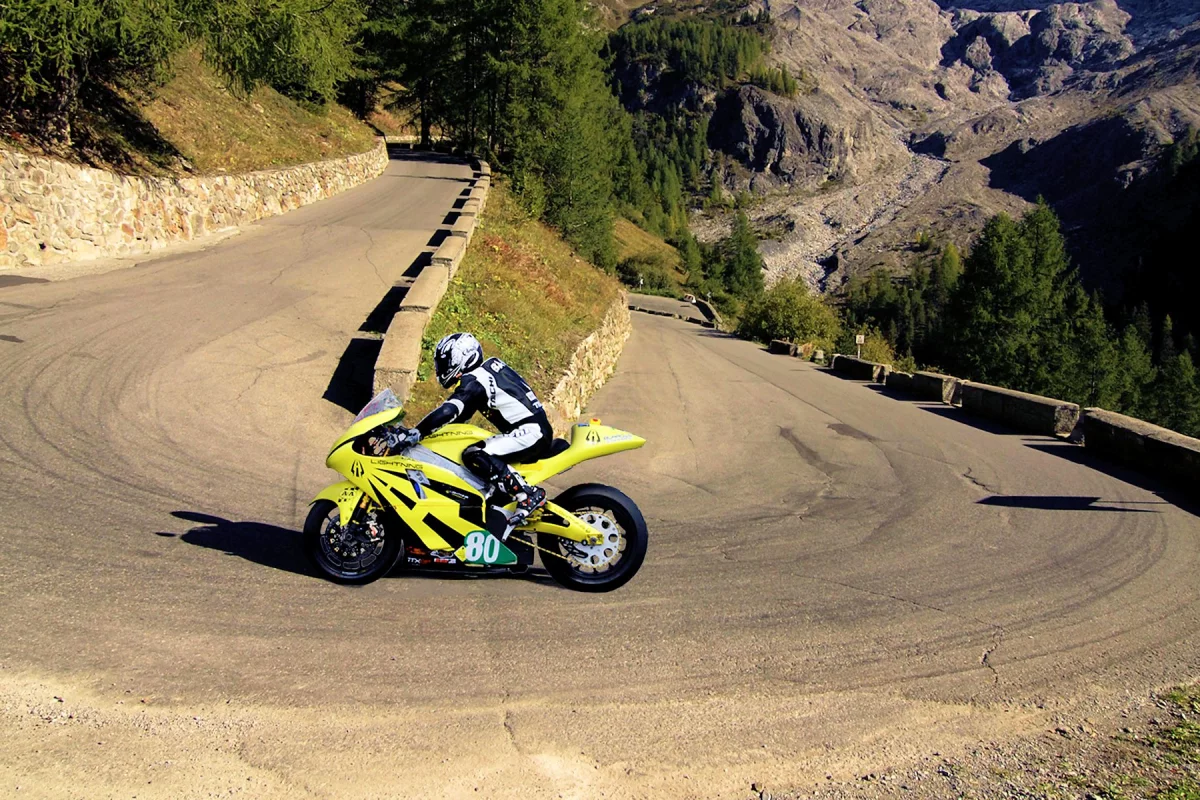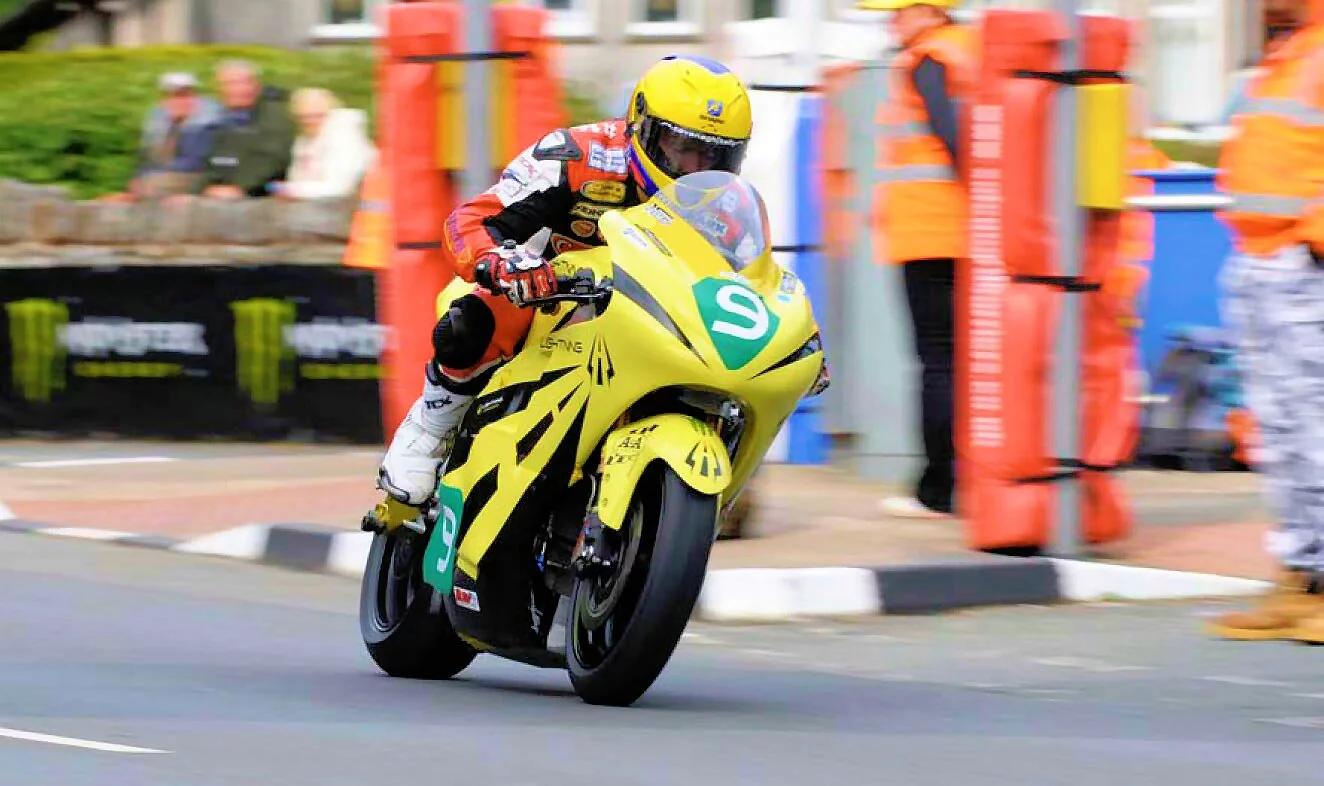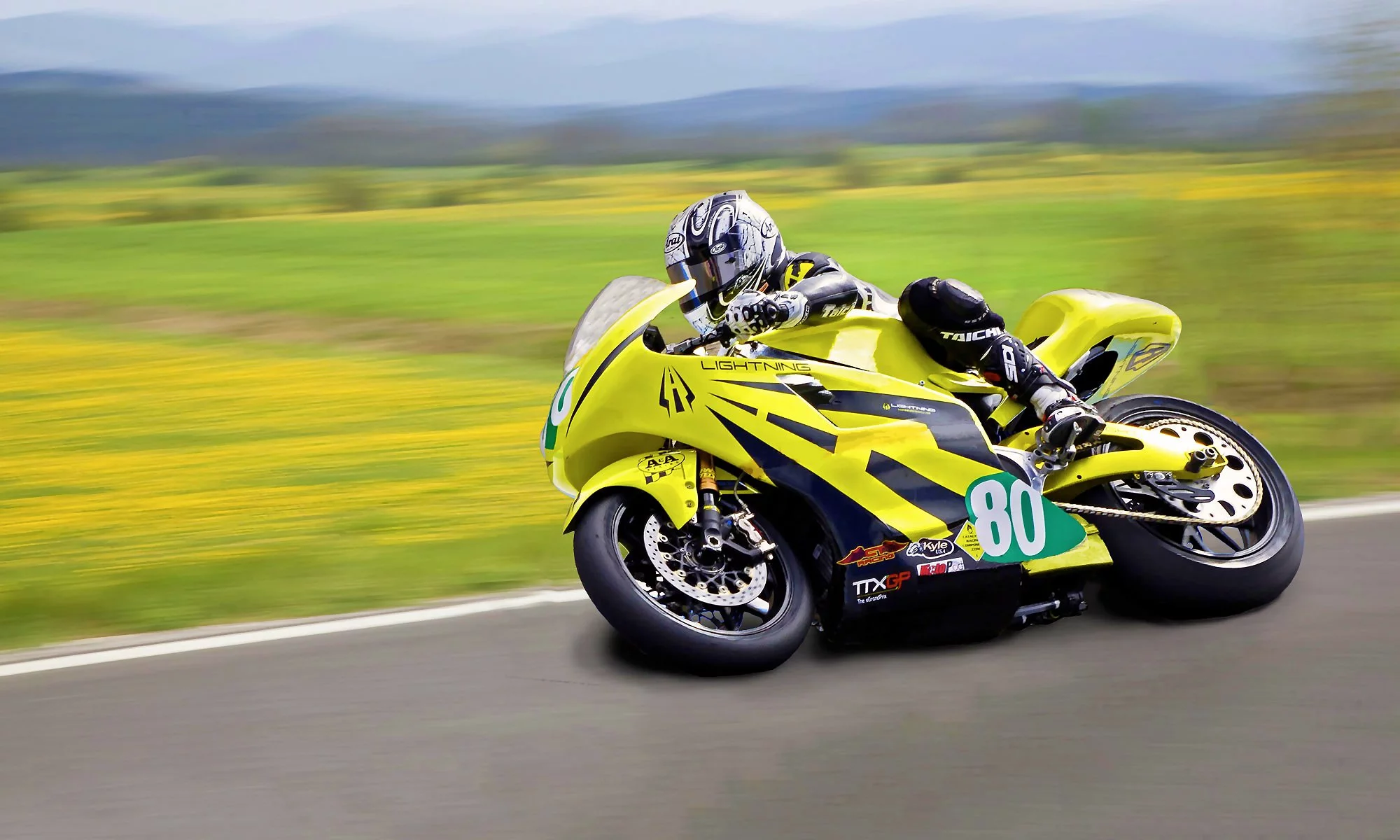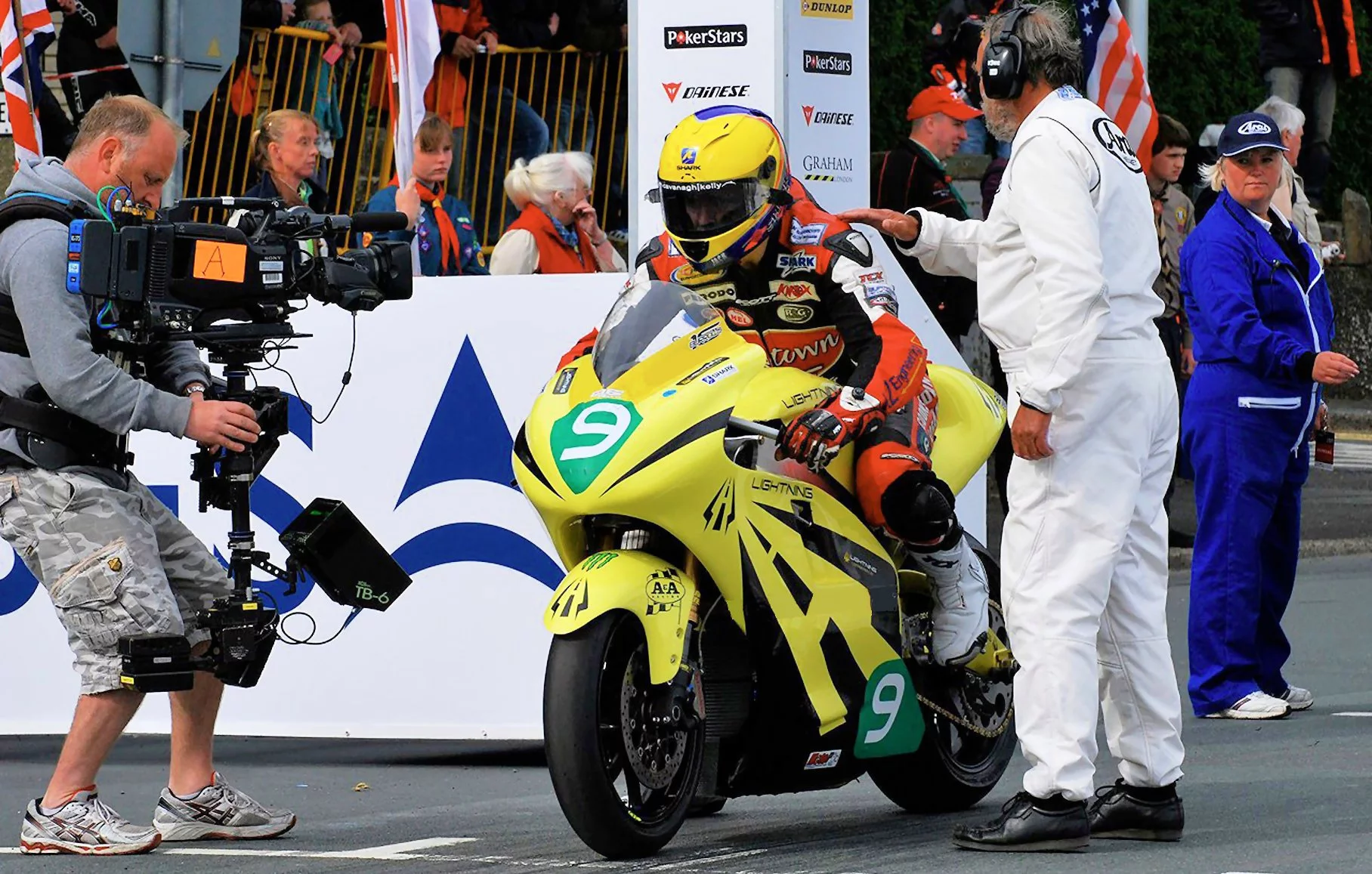Innovation through competition. That is the corporate motto of Lightning Motorcycle Corp., the designers and manufacturers of the Electric Superbike. A production version of the Electric Superbike has won this year's Pikes Peak International Hill Climb among two wheelers (both gas and electric) with a time of 10 minutes and 0.964 seconds. The nearest competitor, racing a Ducati Multistrada, finished with a time nearly 20 seconds slower.
The Lightning Motorcycle Electric Superbike seems to collect records as easily as falling off a log. It holds the current world records for fastest production motorcycle (189.086 mph / 304.304 km/h), and in a tweaked version for fastest electric motorcycle (215.960 mph / 374.554 km/h). While setting this latter record, the equivalent fuel mileage was still better than 50 mpg. Now it also holds the record for fastest ascent of Pikes Peak by an electric motorcycle. More importantly, it is the first electric motorcycle to win over a field of gas-powered motorcycles.
Carlin Dunne, who rode the Superbike to two-wheel victory at Pikes Peak this year, is no stranger to records himself. He has now won the Pikes Peak climb three years in a row, and owns the all-time record of nine minutes and 52.819 seconds for his performance in 2012 on a Ducati Multistrada 1200.
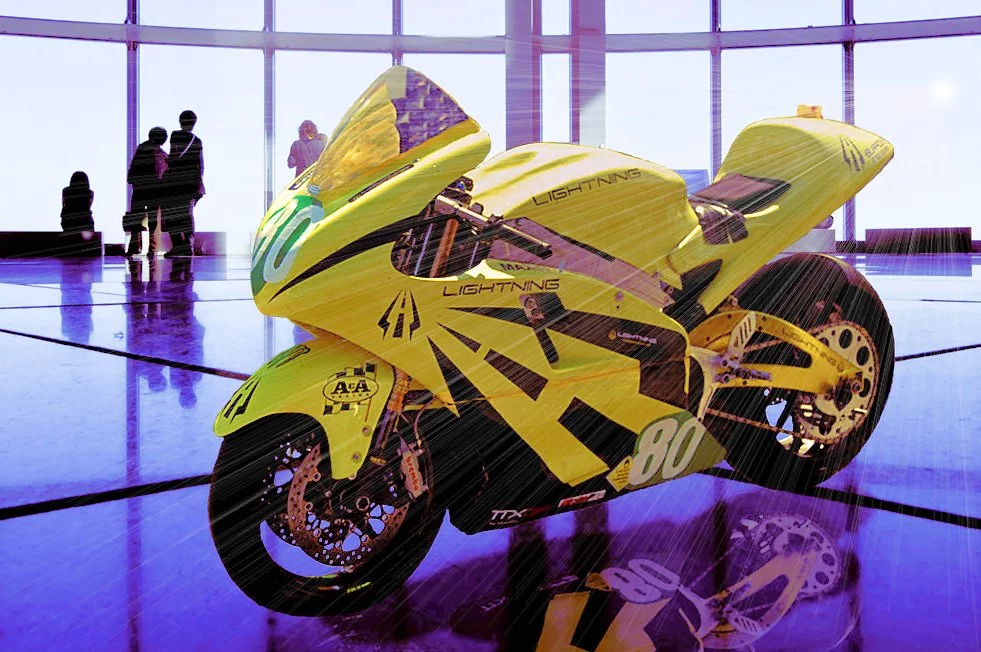
Of course, the Pikes Peak Climb is ideally suited to electric bikes. It takes place at altitudes that make regular gasoline engines cough and wheeze. But as the twists and turns of the course are a bit more difficult on a bike with a battery pack weighing about 250 pounds (110 kg), what the Superbike wins in the straights might be lost in the roundabouts. But not this year.
The Electric Superbike boasts an amazing set of specs. The motor is an internal permanent magnet Remy HVH250, an oil-cooled electric topping out at 10,000 rpm that pumps out in excess of 125 hp (92 kW). The exact value isn't specified, and the HVH250 can put out 230 hp (170 kW) at higher voltage than used in the Superbike. The basic Superbike comes with a lithium-ion battery pack that holds 12 kWh of energy at 370 volts, but a larger pack can be chosen. The total weight of the bike is just under 500 pounds.
Lightning claims 0 - 100 mph (160 km/h) time of 3 seconds, and acceleration from 100 mph to top speed (166 mph for the basic Superbike) in less than ten seconds.

The Superbike uses a monocoque design by Glenn Kerr, wherein the battery pack and motor serve a dual function as the primary stressed elements of the chassis, a design whose equivalent appears in most large gas-powered bikes. The swingarm of the Superbike is directly connected to the rear of the motor.
Lightning's Superbike is equipped with user-programmable regenerative braking, allowing the batteries to be charged whenever the throttle is closed and the brakes applied. The effect on the ride is said to closely replicate the engine braking effect characteristic of gas-powered bikes. The programming allows the user to balance the braking between maximum range and driving style.
As for range, Lightning says that if the rider can expect a range over 100 miles (160 km) on the highway, and perhaps 150 miles (240 km) in mixed driving. So even with recharge times of under two hours, the bike cannot be confused with a touring bike.
A basic version of the Superbike can now be purchased for US$38,888. Lightning has not given details on the available options, but control electronics that provide larger voltages to the motor would be of particular interest, as would a gear ratio (the enormous torque of an electric motor makes shifting unnecessary) more similar to the record-winning prototypes.
The Lightning Electric Superbike could provide a practical proposition for would-be weekend warriors. The bike can be driven as a commuter during the week, for which it has sufficient range and recharge times. On the weekends, it is one of the fastest bikes available for short races. The market may be limited, but most riders will not be able to safely wring the top performance out of a Superbike. Still, many would like to try.
Check out the video below for scenes from the Pikes Peak climb.
Sources: Pikes Peak International Hill Climb and Lightning Motorcycle
